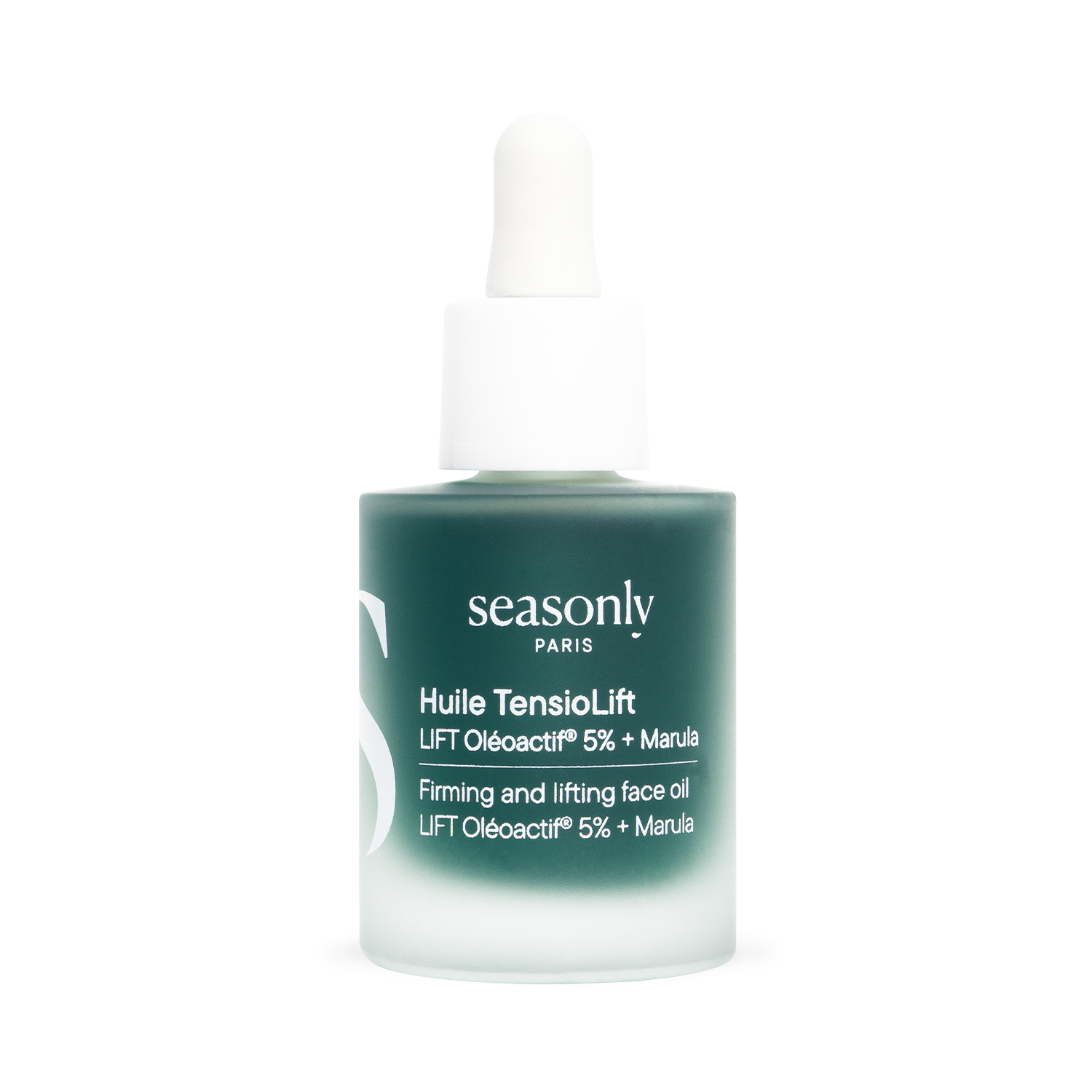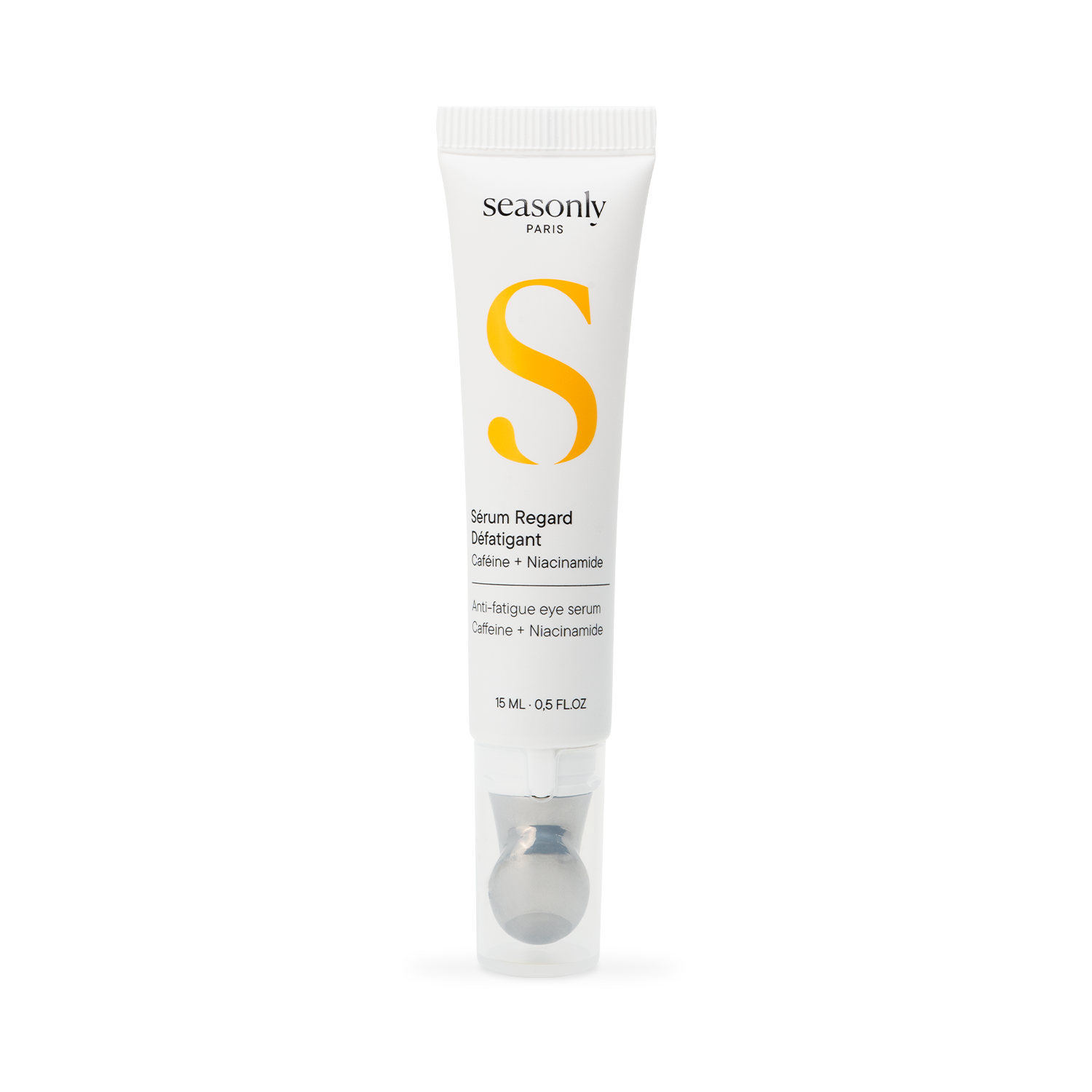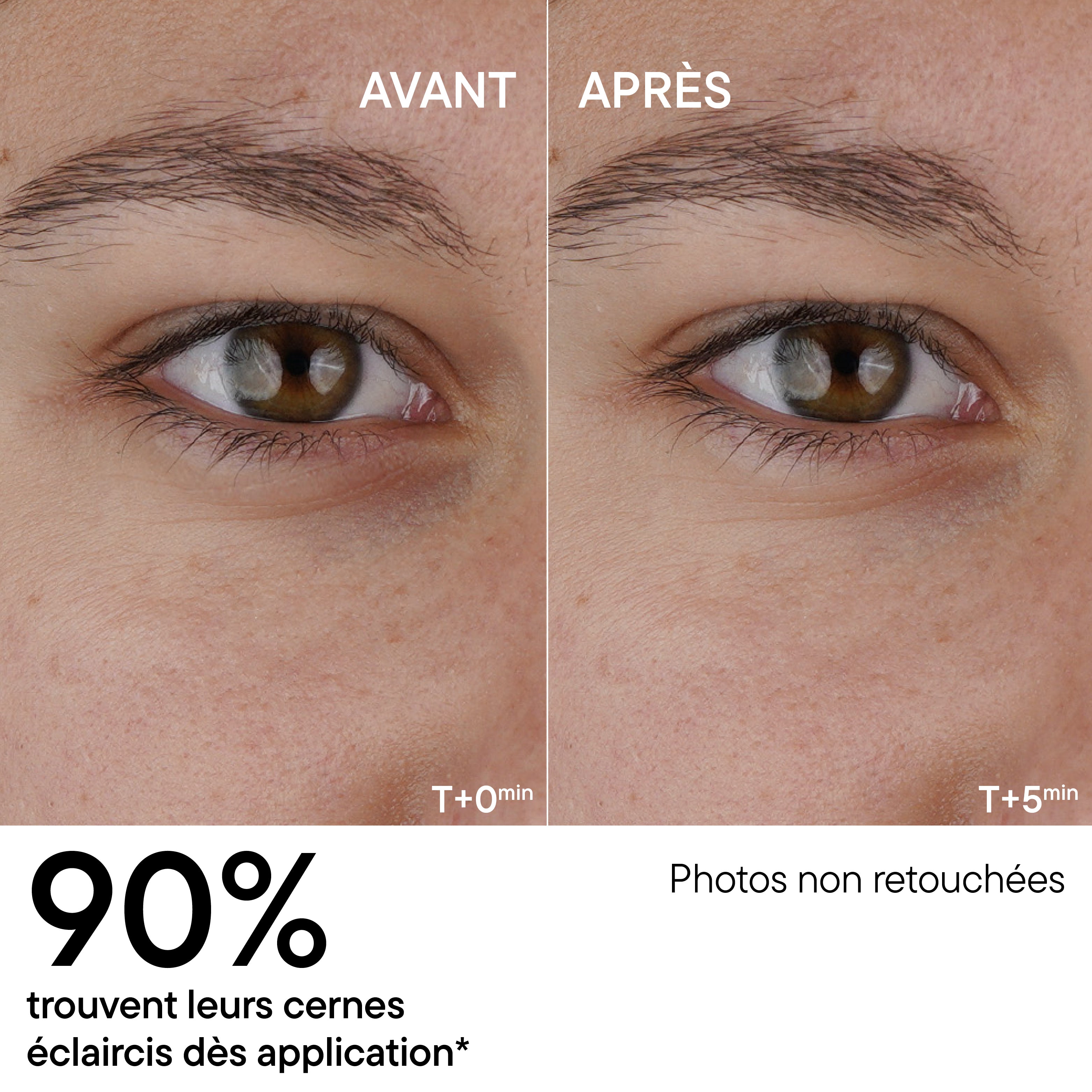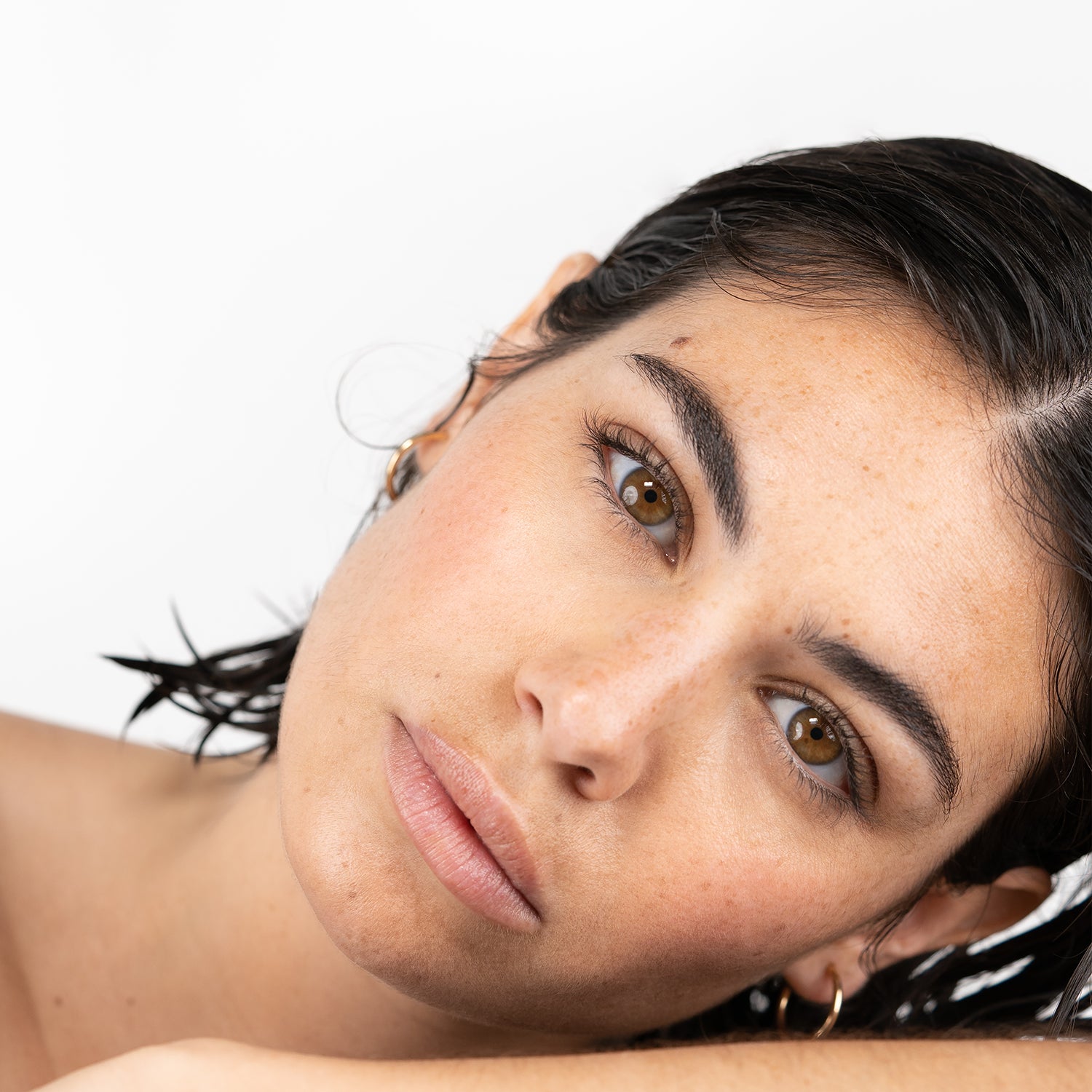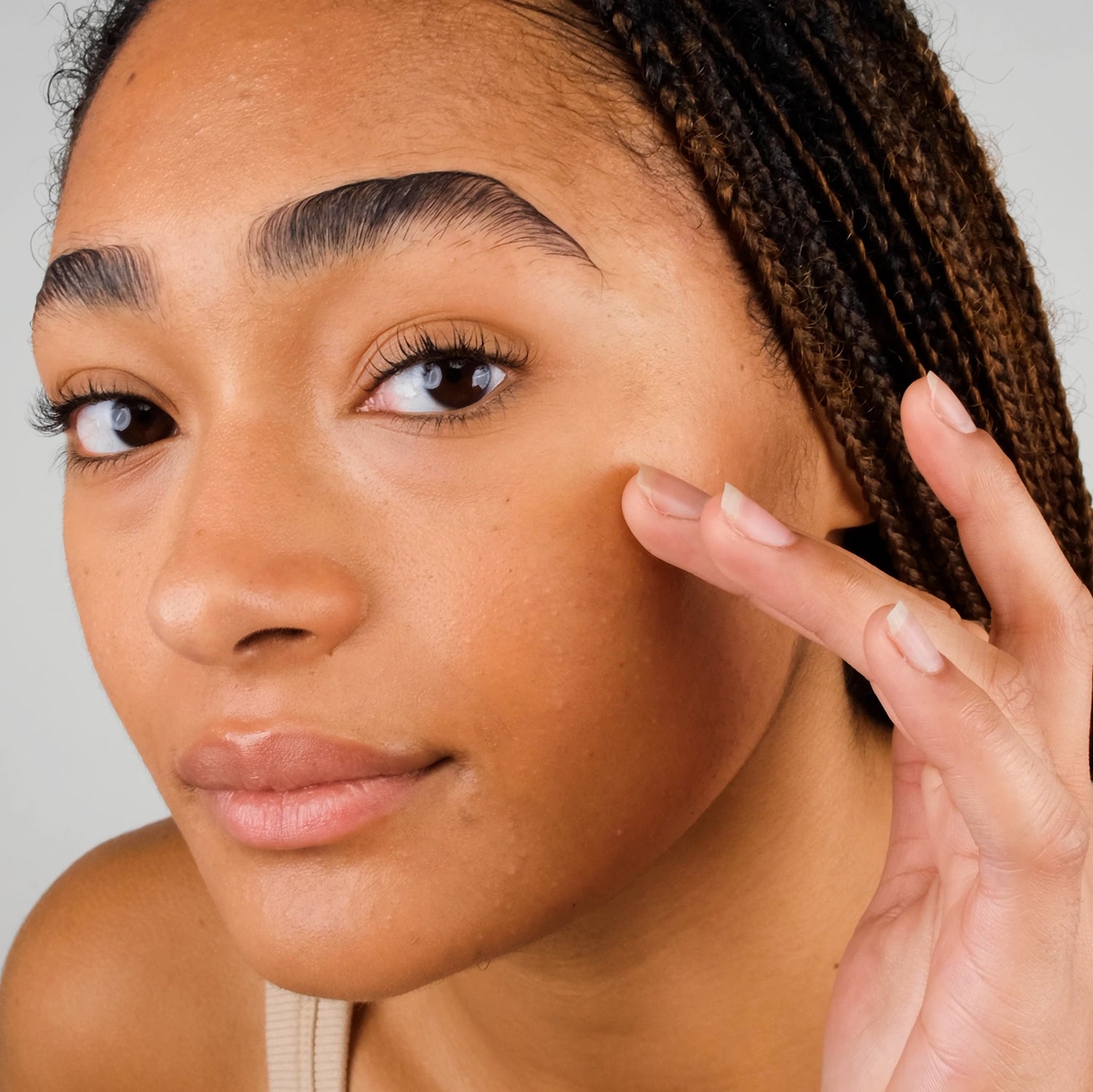Did you know that skin is made up of three layers? The epidermis, dermis and hypodermis; these are the layers that are supported by the facial muscles. Interdependent, these muscles are attached deep in the skin to the hypodermis. They then cover the bone structure of your face. In particular, they control facial expressions by allowing the skin to wrinkle, but it is also thanks to them that we can speak, eat, drink, etc.
What are these three layers made of?
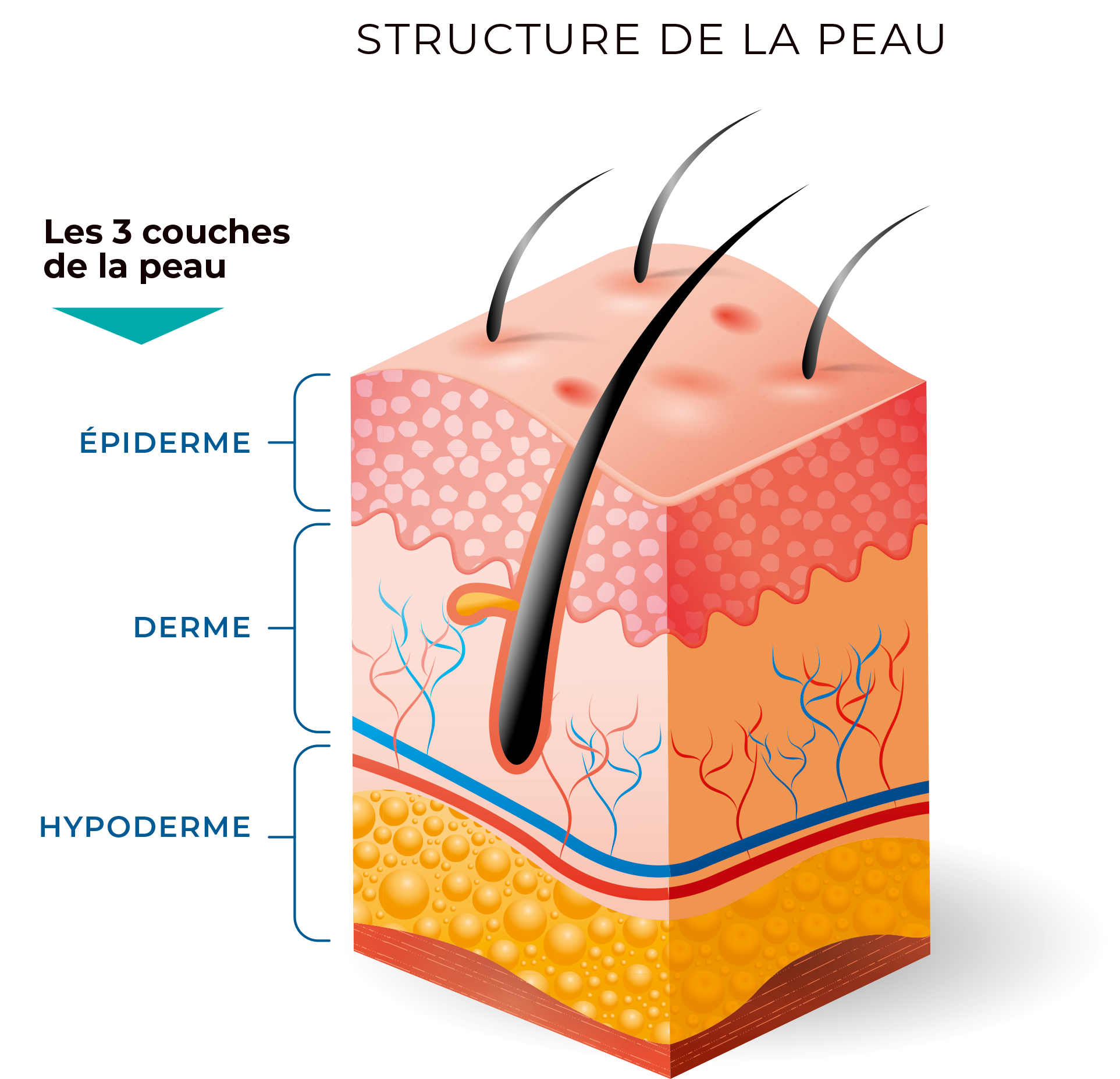
-
The epidermis is the outermost layer of the skin. It is made up of cells called keratinocytes that produce keratin, a protein that gives strength to the skin (think of it as the glue of the skin). It also contains pigment cells called melanocytes that produce melanin, which gives the skin its color.
-
The dermis is the middle layer of the skin. It is made up of fibroblasts, super cells that produce collagen and elastin fibers, which give the skin its strength and suppleness. It is also these fibroblasts that are stimulated during manual massage; this stimulation helps boost the production of these two proteins.
-
The hypodermis is the deepest layer of the skin. It is made up of fat cells and also contains collagen and elastin fibers which help maintain the shape of the skin. We also find the entire lymphatic system which is one of the key factors in the health of the skin, both in terms of its appearance but also for its proper functioning.
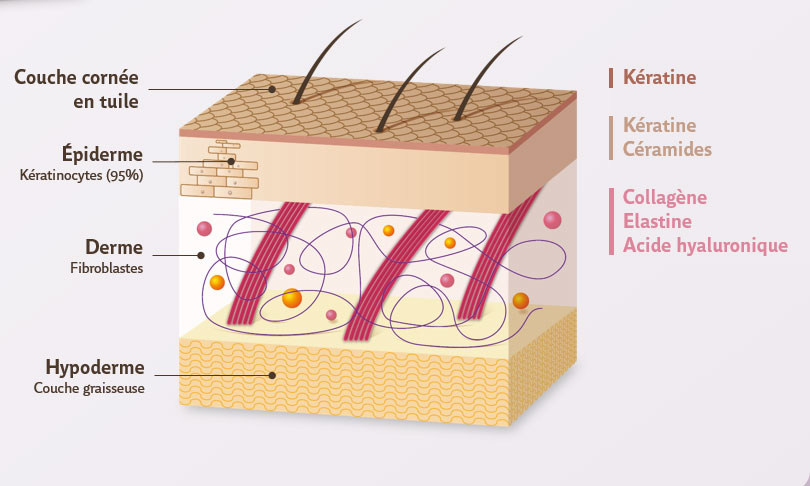
What are the functions of these layers?
- The epidermis mainly fulfills a function of protecting the skin thanks to its keratinocytes and the stratum corneum. The stratum corneum is made up of different lipids which protect the skin against external aggressions and dehydration. In addition, the skin is covered with a hydrolipidic film which acts as an additional protective barrier. This film is mainly composed of sebum secreted by the sebaceous glands.
- The dermis is a layer of the skin that provides structure and support to the skin thanks to the presence of collagen, elastin and muscle fibers. It also provides nutrition to the skin and helps maintain a stable body temperature through its blood vessels. Sensory receptors located in the dermis detect tactile sensations, pressure, heat, cold and pain. The dermis also produces proteins important for skin health, such as collagen and elastin, and is capable of regenerating itself in response to damage or injury.
- The hypodermis plays an important role in several bodily functions. First of all, it acts as a thermal insulation layer to regulate body temperature. It also protects body tissues and internal organs from shock, injury and infection. Additionally, the hypodermis stores fats which can be used as a source of energy for the body. It also supports the skin by attaching it to underlying tissues and can absorb certain medicinal substances.






